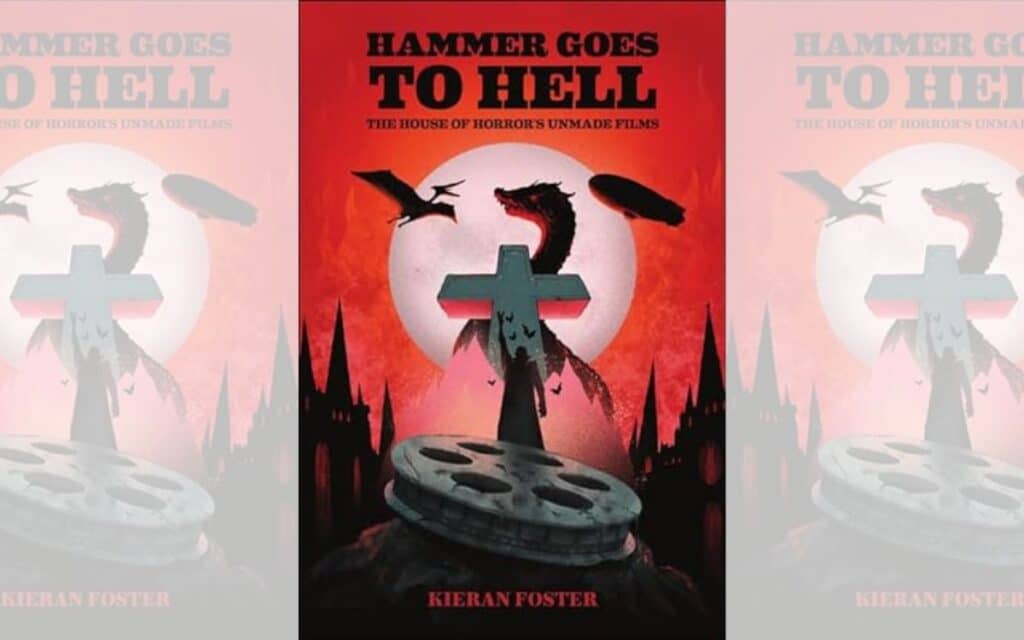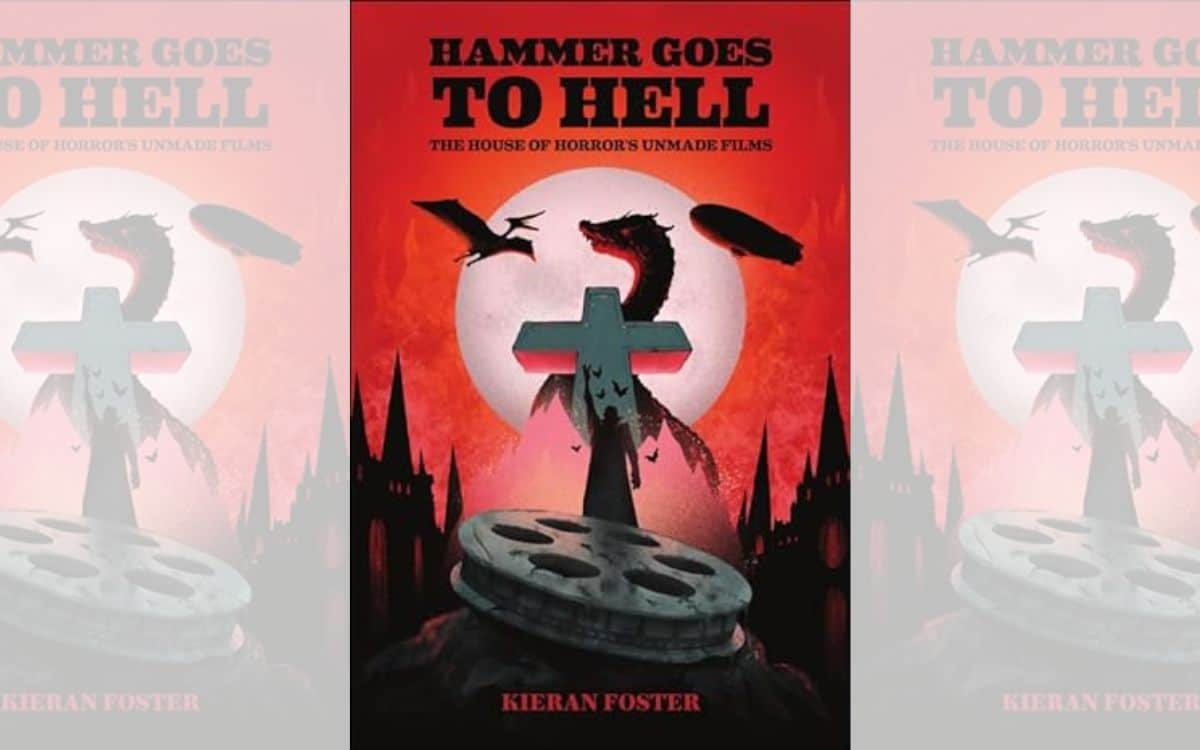Kieran Foster’s Hammer Goes to Hell uncovers the unmade films of Hammer Film Productions. He tells DAVID SAUNDERSON about the studio’s struggle to innovate while staying true to its gothic horror roots

Interview with Kieran Foster, author of Hammer Goes To Hell
Kieran Foster’s exploration into the shadowed corridors of Hammer Film Productions’ vaults reveals a haunting array of ghosts in the form of unmade films, as chronicled in his new book, Hammer Goes to Hell: The House of Horror’s Unmade Film.
In a recent interview with Spooky Isles, Kieran talks to David Saunderson about his meticulously researched tome that resurrects the ghosts of what might have been, unveiling a fascinating “what if” scenario in the storied history of one of Britain’s most iconic film studios.
Hammer Films, renowned for its gothic horror masterpieces, had a profound impact on the horror genre.
The studio’s legacy, built on classics like The Curse of Frankenstein and Dracula became synonymous with a particular style of horror that was both distinctly British and universally resonant.
Foster’s book sheds light on the tumultuous period after Hammer’s golden age, examining how the company’s creative ambitions were both grand and tragically unrealised.
Foster articulates a narrative of a studio at a crossroads, keen on diversifying yet tethered to the allure of gothic that had been its lifeblood.
“They were fantastic at diversifying… at the height of success, you had Jimmy Sangster writing black and white, great black and white thrillers, war movies,” Foster reflects in his study.
However, despite this push for variety, Hammer seemed perpetually drawn back to the horror genre, with many of their unproduced projects steeped in the macabre.
The author meticulously catalogues these lost projects, which are detailed in the appendices of his book, sourced from Hammer’s archives. These reveal a studio struggling to innovate within the familiar confines of horror. Foster elaborates on specific examples, such as “Nessie”, a non-horror that carried unmistakable horror elements, suggesting a studio caught between innovation and tradition.
Delving into Hammer’s attempts to produce blockbuster horror films, Foster discusses scripts like “Vampirella” and “The Unquenchable Thirst of Dracula”. These projects exemplify Hammer’s strategy shift towards high-budget spectacles, yet they always retained a thread to their gothic origins. “They were always just keeping a bit of what made them back in the day,” Foster notes, recognising Hammer’s reluctance to completely reinvent themselves.
In his book, Foster also speculates on the impact of these unmade films. He ponders whether Hammer’s commitment to horror, even in uncharted territories like a Dracula story set in India, was a retreat to a “safe space” or a necessary tether to attract investors and audiences familiar with Hammer’s brand of horror.
As Foster delves into the details of these fascinating unproduced scripts, he paints a picture of a Hammer that could have been—perhaps a Hammer that would have continued to shape the horror genre in unforeseen ways. He highlights “The Impaler”, a script that stayed on Hammer’s slate for over two decades, as a particularly potent example of the studio’s ambitious vision.
The book also touches on the modern Hammer, suggesting a legacy heavily reliant on its past. “There is always a real focus on legacy,” Foster states, pointing out the new Hammer’s recent productions, such as “Dr. Jekyll”, and their explicit connections to the company’s historical repertoire. Yet he posits the question of authenticity and whether this new era of Hammer can craft its own unique identity while honouring its predecessors.
Foster’s examination is not merely a registry of unrealized dreams but a poignant commentary on the ephemerality of creative endeavours and the enduring power of legacy in the cinematic landscape. He suggests that the essence of Hammer might be recaptured if a new generation of creators can establish a consistent style or thematic continuity, forging a new chapter that resonates with the distinctiveness of the Hammer brand.
Hammer Goes to Hell: The House of Horror’s Unmade Films is thus not just a compendium of what was left on the cutting room floor. It’s an insightful discourse on the dynamics of film production, the ever-shifting tides of genre popularity, and the immortal question of what defines a studio’s identity. Foster’s work stands as a testament to the films that never saw the flicker of a projector—phantoms of Hammer’s history that continue to intrigue and inspire.



